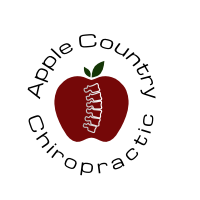Spinal Stenosis Affects Gait and Causes Back Pain
Spinal stenosis affects gait…and today they’re working with “smart shoes” to track gait abnormalities and associated transformed walking patterns! Our Williamson chiropractic patients dealing with spinal stenosis often comment that they walk differently. That makes sense! Apple Country Chiropractic can help relieve Williamson back pain and the related effects of spinal stenosis.
SPINAL STENOSIS AND ITS SIDE EFFECTS
Older folks are increasingly affected by frailty and locomotive syndrome, and those who also have lumbar spinal stenosis find themselves even more affected. In a study of such patients who were heading for surgery for lumbar spinal stenosis, all but 1 of the 234 patients were documented to have locomotive syndrome while 24.8% had frailty. After surgery, those with frailty exhibited improvement in locomotion. (1) Yet surgery does not necessarily enhance gait for all spinal stenosis patients. Researchers evaluated the sagittal vertical axis using a gait motion analysis with lumbar spinal stenosis patients before and after they had decompression surgery to see if there was any improvement in spatiotemporal – how and how quickly a person moves in terms of stride, pace, width of step, etc. - gait parameters. There wasn’t a variation in sagittal vertical axis, but there was significant change in spatiotemporal parameters. (2) Cox® flexion distraction treatment delivered significant improvement to lumbar spinal stenosis patients in terms of enhanced function, symptomatology, and performance-based mobility. Further all of their subjective improvement outcomes were statistically and clinically important. (3) This is good!
SPINAL STENOSIS AND POSTURE
It’s also good to know that lumbar spinal stenosis (LSS) patient’s static spine and pelvic posture are linked to their symptoms. A recent study explored the subject of how dynamic alignment of the spine and pelvic might be linked to lumbar spinal function in the daily life of LSS sufferers and discovered that weak hip or trunk extensor muscles, a greater pelvic tilt angle, or smaller spinal flexion during gait resulted in decreased daily-life lumbar function. (4) Apple Country Chiropractic seeks to improve the quality of life for our Williamson spinal stenosis patients and appreciates studies that divulge what works. A future study’s goal is to establish a set of data that can help define and/or alter patient treatment plans, indications for surgery, and practices for post-surgery rehab for lumbar spinal stenosis patients who elect to have surgery. These patients come with a unique set of issues regarding posture, balance, ambulation biomechanics, paraspinal muscle quality and fatigue rates, as well as symptoms. (5) All of these contribute to a lumbar spinal stenosis patient’s care at Apple Country Chiropractic and outcome.
SPINAL STENOSIS AND BACK PAIN AND SMART SHOES!
To make sure that the clinical outcome is as good an outcome as possible, new tech may come to the rescue. With lumbar spinal stenosis come gait abnormalities like reduced gait speed and unevenness due to muscle weakness and pain in the lower extremities. Don’t worry though. There are “smart shoes” to help. Smart shoes are wearable sensors that can detect gait changes quicker, easier, and cheaper. (6) In the meantime while their accuracy and cost-effectiveness are explored - since smart shoes may not be for everyone - the old fashioned in-clinic tests still work, and Apple Country Chiropractic knows them well! Find out during your examination!
CONTACT Apple Country Chiropractic
Listen to this PODCAST with Dr. Nate McKee on The Back Doctors Podcast with Dr. Michael Johnson as he describes how The Cox® Technic System of Spinal Pain Management helps relieve spinal stenosis and improve balance.
Make your Williamson chiropractic appointment now to visit us especially if you find your gait being “off” and/or have back pain. Spinal stenosis may be the offender, and Apple Country Chiropractic knows how to rein it in!

